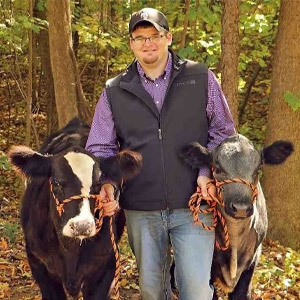Prime Tips
Volume 2, 2020
Calories When/Where They Count?
To date fall weather has been rather mild, however, soon enough good ol mother nature will bless us with the season livestock producers dread…. WINTER. As the saying goes, if you like winter you never owned livestock. However, owning cattle, winter can be a time of excitement as you await the coming calving season and get things geared up to see the success of last years breeding decisions. More importantly during this time though is being aware of the nutritional demands of the cows as you transition from a typical maintenance type diet to diets that meet the needs of a cow in the last 1/3 of gestation.
To illustrate the change in nutritional demands of the brood cow let’s take a step back to Beef Cow Nutrition 101. There are two major dietary components we evaluate to ensure we are meeting the basic nutritional needs of a brood cow, protein and energy (TDN). Dependent upon body condition score of the cows and environmental factors our cows are exposed to requirements of protein and energy can change drastically. You need to ask yourself, do I know the quality of my forage? Will they meet the needs of the cows herd? Do I need supplementation of energy through the use of distillers, corn gluten feed corn? How do weather patterns and hair coat moisture affect the herd?
Let’s take a look at how nutritional requirements change in a cow herd with an average 1400 lb. cow that is in adequate body condition during the 2nd trimester and heading into last 1/3 of gestation, given changes in environmental conditions. A brood cow that is just eating enough to support her basic maintenance at 30 degrees will require approximately, 1.5 # of protein and 12.5# of TDN. As this same cow approaches the last 1/3 of gestation the nutrient demands increase to 1.85# Protein and 14# of TDN, which is about a 20% increase in protein and 12% increase in TDN.
Now that we looked at stage of production changes lets consider temperature changes from late fall to winter. As we begin to look at temperatures heading in to January and February where we are approaching temperatures closer to 0 degrees the protein requirement of that cow holds steady but the energy (TDN) required to maintain that cow is now 16# of TDN, which results in a approximately 28% increase in energy demands of that cow from her maintenance requirement.
However, temperature is not the only thing to consider when evaluating the needed energy for the cow herd, another large factor in required energy is the condition of the hair coat, do the cows have moisture on their backs? The effect of coat dampness is even greater than that of temperature. If we take the same cow from above, last 1/3 of gestation, at 30 degrees temperature change and dry hair coat to wet one we see an increase in energy (TDN) required of approximately 40%. That is a substantial increase in amount of feed a cow must eat to meet her most basic metabolic needs to deliver you a live calf when calving season approaches.
As you consider your own cow herd and begin to formulate the winter feeding program around your desired calving window. Consider these questions, do you know what’s in your hay? Will it meet the needs of the cows? Do you have enough? The staff at Premier Coop is here to help you to answer those exact questions along with the tools provided below from UW Extension. Feel free to reach out your local Premier representative to ensure you have a successful winter and calving season in 2021.
If you would like to have receive consultation on formulating a winter ration, or would like to get signed up for our beef newsletter, please use the form below.
Chris Blank, M.S.
Nutrition Consultant





